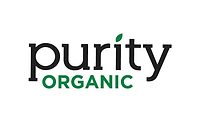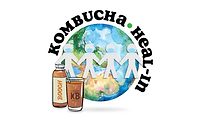Premium tea ingredients leading the way in beverage development
Functional benefits help tea ingredients expand usage opportunities

In the 1924 song “Tea for Two,” Doris Day sings, “Picture you upon my knee, just tea for two and two for tea, just me for you and you for me alone.” Although not the lyrics to an old-time song, beverage-makers and consumers alike are “singing the praises” of the healthful attributes of tea ingredients and revealing that there’s now more premium choices and categories utilizing these ingredients than ever before.
Black tea is No. 1 in the market, followed by green tea, but experts note that more premium tea ingredients like purple, herbal and tea blends are making bigger strides. Teas containing cannabidiol (CBD) and kombucha, fermented tea, also are on the rise.
According to the New York-based Tea Association of the USA Inc., tea is the most widely consumed beverage in the world next to water, and can be found in almost 80 percent of all U.S. households. On any given day, more than 159 million Americans are drinking hot or iced tea at a rate of more than 84 billion servings a year in 2018, the association states.
About 84 percent of tea consumed is black tea, followed by green tea at 15 percent, with oolong, white and dark teas consumed in smaller amounts, it adds.
Synergy Flavors’ Cynthia Bethscheider, a beverage technologist at the Wauconda, Ill.-based company, concurs that black tea is a mainstay for the U.S. marketplace, especially because new flavors like chai and profiles like floral and herbal notes are resonating with consumers.
“While we are also seeing an increase in white tea, green tea is seeing higher visibility due to the health attributes and country-of-origin claims. Persian Lime and Bulgarian Rose profiles are examples of how the country can play an important part of the overall tea experience,” Bethscheider says. “With increased interest in traceability, consumers like to know where the leaf or flavorings are coming from. It gives people a feeling of drinking a healthier, more sustainable beverage.”
The beverage marketplace is ripe with innovation as consumers thirst for familiarity with all things tea-related. For instance, in December, a Dublin, Ohio-based beverage startup launched Spritz Sparkling Tea locally and through an eCommerce platform. Available in 12-ounce slim cans, the brand’s first two flavors are a hibiscus tea with dragon fruit, guava and mango, and a green tea with pomegranate, peach and lemon.
Healthy functionali-tea
Tea extracts are being used in new formats such as sparkling, carbonated, or as a caffeine source in functional drinks promoting energy or health benefits, says Pam Everett, vice president of insights and product innovation for S&D Coffee & Tea, Concord, N.C.
Emerging tea varietals such as white, oolong, hibiscus and herbal/botanical ingredients are performing well, Everett says. “Whether you prefer the taste of oolong over black tea, you can expect many of the same benefits across tea varietals, she explains. “Herbal/botanical ingredients can also introduce appealing colors when added to a tea blend. Hibiscus, for example, lends a pink/purple hue to the finished beverage.”
Nick Salza, vice president of leaf tea for Martin Bauer Inc., Secaucus, N.J., expresses similar sentiments: “As a whole, the demand for botanical ingredients in beverages is growing,” he says. “We see beverage-makers using numerous herbal teas — mint, hibiscus, cucumber, lavender, chamomile, jasmine, ginger and turmeric are just a few popular ones.”
Tea’s smell contributes to its appeal and may premium teas are formulated with tea essences, which enhance the natural aroma of tea in a finished beverage, according to Stacy DeMars, associate marketing manager for Lincoln, R.I.-based Finlays.
Experts also highlight the healthy attributes of tea ingredients. “Both green and black tea contain polyphenols, purple tea contains polyphenols and anthocyanins; all of which are antioxidants that may help boost the immune system,” says Nicole Toal, tea applications manager at Finlays. “Tea also contains an amino acid called L-Theanine, which is said to have a positive impact on overall relaxation and calmness.”
Katie Ferren, vice president of sales and marketing for Blue California, highlights the abundance of science and functionality behind green tea extracts.
“Green tea extracts are high in antioxidants, may promote heart health, [are] good for brain health, help support healthy blood sugar levels, and can help with weight loss,” she explains. “There is some evidence that the catechins in green tea extracts may benefit liver function, be good for skin health, as well as immune support. Another benefit less widely known is that green tea extracts may support exercise performance and recovery.”
The Rancho Santa Margarita, Calif., company suggests adding L-Theanine as a functional food ingredient can help “promote a focus and relaxation claim.” It offers a green tea extract containing 50 percent epigallocatechin gallate (EGCG), 95 percent polyphenols and 80 percent catechins that could help with several other claims, Ferren says.
Follow the ‘rising tide’
As some consumers have moved away from carbonated soft drinks, some have migrated to healthier alternatives like tea. This has led to a “rising tide” that has helped propel virtually every tea brand and catapulted demand for ready-to-drink (RTD) and powder tea beverages, says Philip Caputo, marketing and consumer insights manager, Virginia Dare, Brooklyn, N.Y.
“Across the board, tea has been increasing due to higher demand for RTD and powder tea beverages,” Caputo says. “… Now consumers are looking to experience tea in different ways. A lot of new growth in the tea realm is attributed to consumers wanting a more premium tea. Things like single origin RTD beverages and unsweetened artisanal/herbal teas are in high demand as opposed to the traditional sugar-sweetened, fruit-flavored iced teas where the tea impact was slighter/less relevant.
“Now, consumers want to be able to taste the different tea flavors and distinguish the differences between the premium beverages,” Caputo continues. “… There are many different kinds of black teas that bring different taste characteristics to beverages, opening opportunities for a broad range of products with unique and distinguishable taste.”
Herbal tea ingredients also promote a healthy halo. For example, chamomile is associated with relaxation, while yerba mate is a natural source of caffeine for energy and focus, Martin Bauer’s Salza says. “Turmeric is known to aid digestion. Ginger is known to aid digestion and have anti-inflammatory benefits. Rosehips, elderberry and sea buckhorn naturally contain vitamin C and antioxidants,” he says.
Thirs-tea for tea
Tea and tea ingredients continue to garner interest from ingredient suppliers. In fact, in its May “U.S. Beverage Market Outlook 2019” report, Rockville, Md.-based Packaged Facts estimates total retail dollar sales of the U.S. tea and RTD tea market at $8.3 billion in 2018, with sales increasing at a compound annual growth rate (CAGR) of 3.8 percent since 2013.
However, volume sales were nearly flat during the period, indicating that higher-priced, premium products were driving dollar sales, the report states.
“Overall growth of tea has been driven by convenient RTD teas, particularly refrigerated varieties (including kombucha), that have a more healthful aura than shelf-stable products,” it states. “Tea has also benefited from consumers’ ongoing recognition of its healthy properties, especially compared to sugary carbonated beverages.
“However growth stalled in the last few years as concerns over the health effects of sugar have increased, resulting in decreasing consumption of sweet, high calorie beverages like some RTD teas,” the report continues. “Increased competition from other ‘better-for-you’ beverages has also affected tea.”
Yet, tea continues to gain ground across all categories, according to Ross McDonald, commercial lead of brewed tea extracts at Finlays, who points out that “the U.S. has overtaken the U.K. in tea imports for the first time and is now ranked third globally.”
Premium, higher-priced teas will lead growth, driven by new products that have reduced or no sugar, or that provide additional health benefits, Packaged Facts’ report states. “Kombucha will be a significant growth driver as its sales continue to rise due to increasing consumer interest in gut health and probiotics,” it states.
Los Angeles-based Better Booch offers eight flavors of its self-titled, premium small-batch kombucha. The sparkling probiotic beverage is vegan, kosher, non-GMO and contains no juice, powders, chemicals or concentrates, the company says.
Harmonizing with hemp
As tea ingredient trends proliferate, S&D Coffee & Tea’s Everett expects to see cold-brew tea and sparkling iced tea take up more shelf space.
When it comes to CBD, however, Everett believes it comes down to personal preference. “Many consumers are curious and interested in consuming this ingredient in many different forms of beverages, while many consumers in fully legal states are not necessarily interested,” she explains. “The end product still needs to satisfy the consumers’ taste preferences for the beverage. CBD, like any other ingredient, has viability as long as the beverage is executed well.”
Focusing on CBD’s rise across food, beverage and nutrition categories, Synergy Flavors’ Bethscheider suggests that it now is a “more acceptable ingredient than ever before.”
“I have seen new brands launching complete lines of teas infused with hemp or CBD,” she explains “With its earthy notes complementing the tea profile, it is understandable why people may gravitate toward CBD-containing RTD teas. There are now pop-up sections in stores dedicated to CBD oil and products containing the ingredient. I think it is an ingredient we will continue to see growth in across many categories.”
Santa Monica, Calif.-based mood33 recently released six herbal teas infused with organic, American-grown, full-spectrum hemp extract, premium botanicals and real fruit juices. With 33mg of hemp-derived cannabinoids, the herbal teas feature such flavors as peach and yerba mate (Joy), lavender and chamomile (Calm), and raspberry lemon and guayusa (Energy).
RTD teas of all types are capturing consumers’ attention, but experts suggest the alcohol space offers growth potential for tea usage.
“A push for alcoholic beverages with lower ABV opens the door for tea in malt-based and/or canned cocktails,” Finlays’ Noal says. “Tea plus beer in the form of a radler or shandy has been gaining traction as a trend in the market. Hard kombuchas are new to the alcohol space, but given the success of standard kombucha, we expect this category to grow.”
Virginia Dare’s Caputo highlights the success of lower-proof offerings like Twisted Tea to higher-proof products like Firefly. “In fact, the high-proof, tea-flavored space saw a huge increase after the introduction of Firefly with many brands joining the market, but demand seems to have waned a little over the last few years,” he says.
When it comes to formulating with tea ingredients, beverage manufacturers should be mindful that tea contains caffeine and can be sensitive to its environment. “Acidic conditions, quality of water and addition of other ingredients can impact the tea. Due to this, tea should be dissolved in water before any other ingredients are added,” Finlays’ Toal says.
As a versatile, delicate ingredient, “tea can provide different organoleptic profiles depending on water quality, pH, types of acid, buffering system and process condition,” Martin Bauer’s Salza says. “Other challenges may include stability, solubility, sedimentation [as] organoleptic properties of botanicals can impact the end product.”
Botanical ingredients, native to different parts of the world, may have limited availability, which could affect cost, sourcing and supply. Martin Bauer offers a portfolio of more than 200 organic and conventional tea and botanical ingredients for beverage applications, he adds.
Eyeing the future, Packaged Facts projects retail dollar sales of the U.S. tea and the RTD tea market will be $9.5 billion by 2023, increasing at a CAGR of 2.8 percent from 2018.
Hybridization trends — or combining two or more categories or flavor profiles — is becoming the norm, Synergy Flavors’ Bethscheider says. To help its customers understand the versatility of tea, Synergy launched its Inspiring Beverage Segment for Tea designed to take “you on a journey through the tea market, from unsweetened black tea to full on tea hybrids containing functional ingredients, alcohol, juice and carbonation,” she says. “It really showcases the versatility and varying drinking occasions of tea … for refreshment, relaxation or re-energizing.” BI
Looking for a reprint of this article?
From high-res PDFs to custom plaques, order your copy today!






